SMART WAYS SCHOOLS CAN SAVE
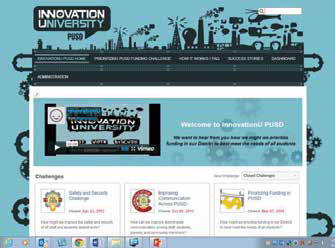
As state and federal funds continue on their downward spiral, districts are forced to come up with alternative ways to pay for staff, supplies, and programs. Here are some ideas you may not have considered.
Staff and faculty at Poway USD collaborate and exchange ideas via their Innovation U website.
CROWDSOURCING FOR FUNDING
When administrators at Poway (CA) Unified School District wanted to drive innovation last year, they decided to try crowdsourcing and launched a social media site called InnovationU. “The goal was to get our community collaborating and exchanging ideas,” says Rich Newman, director of learning support services. So far, it’s been a resounding success, with each round of crowdsourcing generating more involvement.
The first challenge, in the winter of 2013, asked for ideas on improving student safety. There were more than 10,000 hits and 100 ideas, with some of the best ideas coming from bus drivers.
The most recent challenge, in March 2014, asked staff members for their suggestions on prioritizing district funding to best meet the needs of all students. Given California’s new Local Control Funding Formula, which shifts spending decisions from the state to the local level and requires districts to involve parents and the community to create a Local Control and Accountability Plan, it seemed like the best way to gather input was to craft a three-year plan. “My initial goal for page views was 2,000,” says Newman. “We broke that [goal] in four days. I hoped that 30% of our staff would submit ideas; amazingly, 55% of our staff participated in the two-week challenge.”
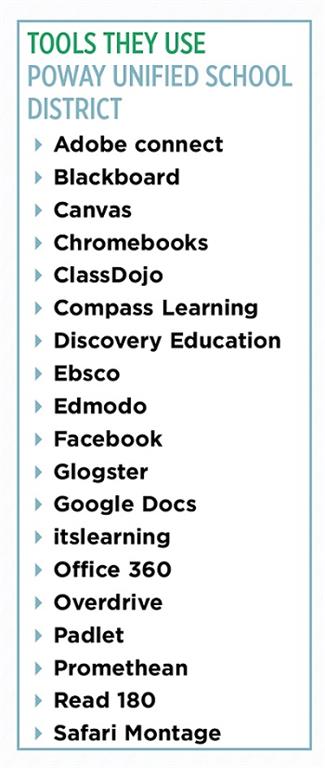
Everyone from counselors to custodians to administrative assistants to principals shared their thoughts on which programs were the most important. People who didn’t know each other were chatting online and getting engaged. For the first week-and-a-half, people submitted ideas and voted and commented on the ones they liked best. To move up, an idea had to get lots of comments and votes. During the last three days, the most popular ideas were paired against each other and voted on. “It was a cool way for people to say ‘I prefer this,’ and the winning ideas filtered to the top.”
Tools and ideas to transform education. Sign up below.
One of the top ideas staff want funded is strengthening the ability to connect with students academically, socially, and emotionally. The district wants to forge really strong, sustainable links between students and adults on campus by reducing class size. Another winning idea was to increase spending on career and technical education. “People want to have an infrastructure in which we can help students find their passions
While district staff members were weighing in, parents were sharing their thoughts in an online survey and students participated in a superintendent roundtable. “It used to be that the loudest voice wins; we want the smartest idea to win,” says Newman.
A Meridian teacher shares her student’s work at one of the district’s quarterly Technology Showcases.
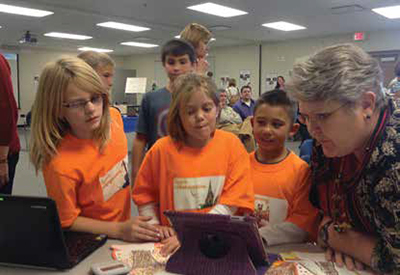
With the challenge behind them, the district can now develop a five-year plan that it knows is based on what stakeholders want. Crowdsourcing helped Poway to be more confident in its decision-making. “It’s unique to say we’re not looking to fund the best idea but to have guidance on what will make every child and teacher successful.”
According to Newman, crowdsourcing has changed the culture of innovation and communication across the district. “We talk about the power of social media to communicate, but to drive a vision for a district—that doesn’t always happen. At Poway, it has started.”
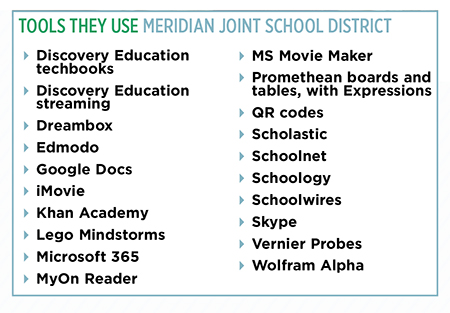
GRANTS AND BUSINESSES HELP A DISTRICT THRIVE
With the lowest state-funding-per-pupil spending in the nation for a district of its size, Meridian Joint School District (Idaho) had to get creative to preserve jobs, staffers, and programs. Today, the district is lucky enough to fund most of its projects and initiatives through grants and community support. “Last year and this year, we brought in about two million dollars in grants, many of which are tech-related,” says Linda Clark, superintendent. Teachers were struggling to fill out applications, so the district hired a part-time grant facilitator to identify sources, track applications, and help teachers learn how to write stronger applications. She sends an enewsletter every couple of weeks, containing best practices and grant-related opportunities. She’s been at the district for five years, and each year the amount of grant funding has increased.
An AmeriCorps volunteer works on reading with a Stukey Elementary student.

In addition to applying for money, Meridian has turned to the community for financial assistance. “When the state eliminated field trips, we reached out to local businesses and they gave us money to fund those trips,” says Clark. “Our Chamber of Commerce helps us fund our program that supports our homeless students, and other local groups help us send backpacks home with food for our children of poverty.”
At the district’s Tech Expo last August, 900 teachers attended, to see each other’s projects and pilots. There are also smaller showcases every quarter at which any teacher who has gotten a grant can highlight his or her projects. The business community pays for these well-attended events, which serve as catalysts for new ideas.
“The success of our districts depends on the quality of the partnerships we have,” says Clark.
VOLUNTEER TUTORS
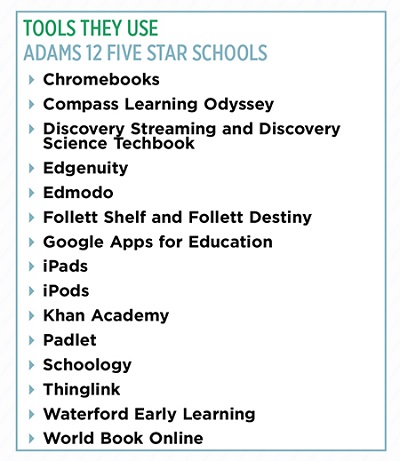
After years of statewide budget reductions—this year’s exceeded $50 million—Adams 12 Five Star Schools in Colorado was forced to re-examine how it allocated funds. The district had to cut back on academic coaches and intervention specialists, but it was fortunate enough to get a grant to develop a new model for reading intervention. Through a Mile High United Way initiative, the district became affiliated with Colorado Reading Corps, in which AmeriCorps members provided literacy interventions to students in grades K-3 at three elementary schools. “We saw such positive results that we are expanding the program to 23 schools next year, through some new state-allocated money designed to improve literacy in grades K-3,” says Chris Gdowski, superintendent. “It’s a cost-effective way to provide intervention for many more students. The AmeriCorps volunteers will also train parent volunteers in our more affluent schools to do tutoring in those schools.”
INFORMING THE COMMUNITY AND MAKING SMART CHANGES
Teachers and students at Discovery Middle School use iPads in math and language arts classes.
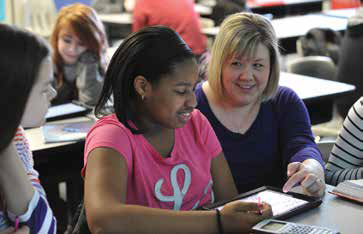
Vancouver (WA) Public Schools is a district of 22,700 students, with 54% receiving subsidized lunches, an increase of 15% in the past seven years. Last year, voters considered a major technology levy pegged for education, which included $24 million for technology, including laptops, tablets, and professional development. To keep the community informed about weLearn 1:1, a tech initiative that provides mobile devices to every student in grades 3-12, superintendent Steven Webb did more than 40 different community presentations to talk about weLearn 1:1 and its importance to student learning and engagement. “The program is about ensuring that our graduates have the knowledge, adaptive skills, and more to thrive in a globally interdependent economy and workplace,” says Webb. “They have to have access to the kind of productivity, collaboration, and communication tools that they’ll be expected to use.” In February 2013, Vancouver received nearly 63% support for the tech levy.
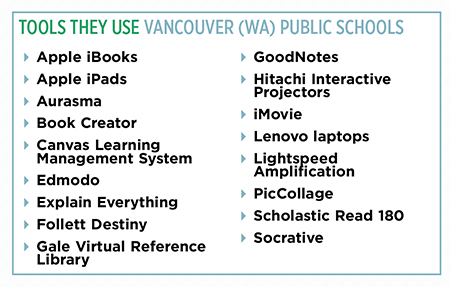
For five years, the district delayed asking for money, since it was in one of the hardest hit counties in terms of unemployment. During that time, they deployed certain technologies to free up expenses that would go toward tech-based pilots. By deploying mobile GPS routing software in the transportation department, the district saved $300,000 annually. By moving from a centralized warehouse to a streamlined, direct-shipment process, they saved close to $1 million a year. By changing the business model in nutrition services to partner with baking vendors who shipped directly to schools and deploying point-of-sale technology to track meal usage at each school, they were able to more accurately forecast raw materials and moderate orders based on demand, saving another $1 million annually. All of this money went toward weLearn 1:1.
RETHINKING PRINT SAVED A CALIFORNIA DISTRICT THOUSANDS
Challenge: Alvord (CA) Unified School District had aging copiers that were often out of service for weeks, forcing teachers to spend too much time trying to print classroom materials and outsourcing them to local vendors at a much higher cost.

Solution: By replacing its copiers with 114 networked Konica Minolta Bizhub Multifunction Printers, the district reduced print outsourcing and saved more than $60,000 annually. Now schools have reliable, high-quality color and black-and-white printing capabilities and can print test booklets, student handbooks, calendars, and reading booklets onsite. “In talking with teachers, it was clear our schools needed more reliable printing resources, but our school board was reluctant to make any new equipment investments, fearing higher operational costs,” says Herb Calderon, assistant superintendent of business services. “Konica Minolta was able to demonstrate how the district could save valuable budget resources while providing our schools with advanced printing capabilities. It was a win-win value proposition.”
TEXAS’S SECOND-LARGEST DISTRICT SAVES TIME AND DOLLARS WITH NEW SECURITY SYSTEM
Challenge: With 160,000 students and 20,000 staff members across 384 square miles, managing and securing every student and employee’s information in the Dallas (TX) Independent School District (ISD) is an enormous task. Until recently, Kevin Collier, LAN engineer at Dallas ISD, managed it by himself, and keeping track of the intricacies of the network, passwords, and permissions was nearly impossible. Simple tasks, like setting passwords for new students, required Collier to travel to each campus to make the changes. The whole process could take a full day. And if there was an outage at multiple campuses, one or more would be left vulnerable until Collier could get there to handle the problem.
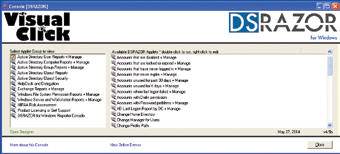
Solution: The district used Texas-based security firm Visual Click to migrate to DSRAZOR for Windows, which allowed Collier to handle many of the tedious tasks, like changing passwords, virtually. He could also automate certain functions, freeing his time to focus on more critical tasks. DSRAZOR for Windows offers hundreds of built-in apps that are simple to use and easily configurable to fit the district’s needs. To change passwords, Collier now uses DSRAZOR’s point-and-click features to quickly create an app and copy it to the server. Any campus staff member can download it from the server and begin setting passwords within 10 minutes of basic instruction that pops up on the screen. “There is no way our team would have the time and money to come up with all of the customized apps available in DSRAZOR,” says Collier. “The speed and ease that allows us to customize various tasks is a big savings because we do not have to find funds to buy specific programs to do it.”
A K-5 SCHOOL LOWERS COSTS WITH VOIP
Challenge: In 2013, when The Carey School (a PreK-5th-grade school in San Mateo, California) upgraded buildings that had not been touched in more than 50 years, it decided to replace its outdated phone system, too. The technology director wanted to be able to better connect administrators and teachers, and the school needed a phone system that performed well in temporary trailers (during construction) and between the existing buildings across campus. Additionally, the old proprietary system was hard to use and required an expensive outside vendor to make even simple changes.

Solution: Install a Voice over IP (VoIP) service. After extensive research, the school selected Digium’s Switchvox business phone system for its customization options, low cost, and robust features. The school also chose Digium’s IP phones. Now staff can receive email notifications when they have new voicemail. The phones can also be used to operate the school’s bell system. Teachers and staff members can make calls remotely if they are coming from the staff’s school extension, so no personal phone numbers are shared. Changes to the phone system—such as adding new users and moving phones from one location to another—now take minutes, versus days or weeks. Plus, the changes can be handled in-house without having the high maintenance costs of paying a vendor to do the work. Best of all, the school knows its fixed telecommunications costs for the year, rather than being subject to unpredictable month-to-month costs with its old system. This has helped the school with budgeting.
LOS ANGELES MIDDLE SCHOOL SAVES THOUSANDS BY BUYING REFURBISHED MACS
Challenge: Like most schools in the country, Thomas Starr King Middle School in the Los Angeles Unified School District wanted its students to be able to use technology throughout the day. “Thomas Starr King is one of the highest performing middle schools in the greater Los Angeles area. To maintain the bar we have set so high, it is imperative our students have access to the highest quality technology available,” says Mark Naulls, principal.
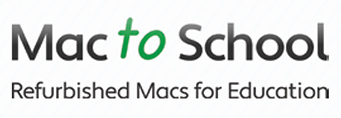
Solution: Naulls turned to Mac to School, which provides refurbished Apple devices to K-12 schools, to buy 35 MacBooks and 40 iMacs. The school has purchased from Mac to School in the past, citing the quality of technology, customer support, and warranties as the main reasons. While the middle school would have paid more than $85,000 to buy new technology directly from Apple, Mac to School’s refurbished technology only cost $33,000. “We are always looking for creative ways to get the most instructional value for every dollar we spend,” says Naulls. “Buying refurbished computers allowed us to make the most of our technology budget without sacrificing the quality of the devices.”
PENNSYLVANIA MAKES AFFORDABLE SPEECH THERAPY AVAILABLE FOR DISTRICTS
Challenge: Pennsylvania’s Capital Area Intermediate Unit (IU) needed to find an affordable way to provide school districts across south central Pennsylvania with consistent access to high-quality, online speech and occupational therapy services. By pre-vetting and negotiating technology services, Capital Area IU helps districts meet student needs despite staffing shortages.

Solution: Capital Area IU partnered with PresenceLearning, a provider of live, online speech therapy services for K-12 students. The new partnership grants the Capital Area IU’s 24 districts access to PresenceLearning’s award-winning, online therapy services to battle the persistent shortages of speech-language pathologists and occupational therapists and bring needed services to students. PresenceLearning can provide speech-language pathology assessments (e.g., initial, triennial, and dismissal) online, as well as write Individualized Education Plans (IEPs) and manage student cases. By partnering with PresenceLearning, school districts can fill staffing gaps related to acute and chronic shortages of speech-language pathologists and occupational therapists, reduce high caseloads for onsite personnel, improve student outcomes, and become more efficient. PresenceLearning can provide access to technical specialists, as well as culturally and linguistically diverse speech-language pathologists and occupational therapists. “We keep high quality and low cost in mind for the services we offer,” says Mark Hennes, special projects supervisor at the Capital Area IU. “By implementing PresenceLearning’s therapy through our IU, districts will have access to much-needed services that have been vetted for quality and price.”
